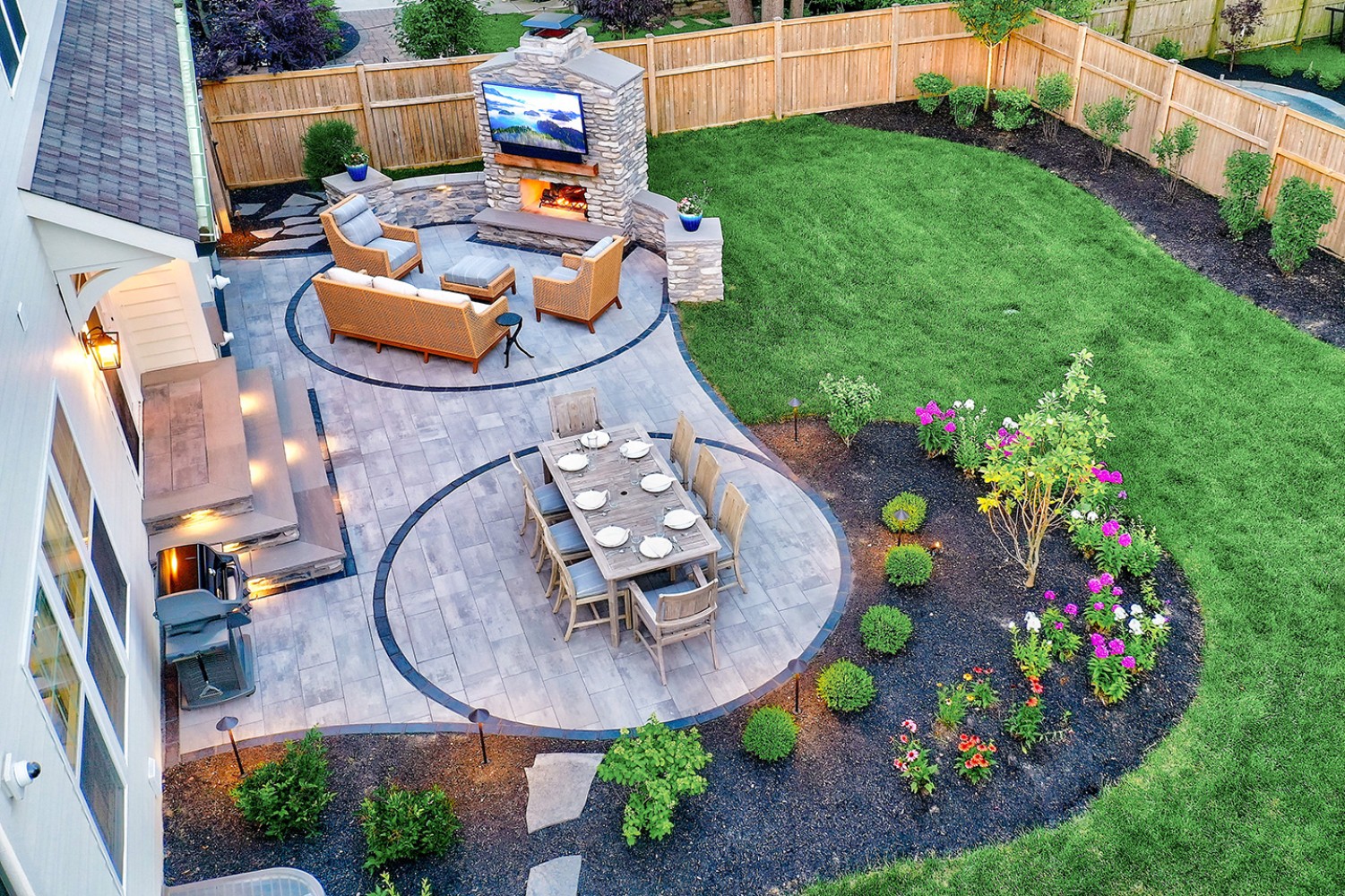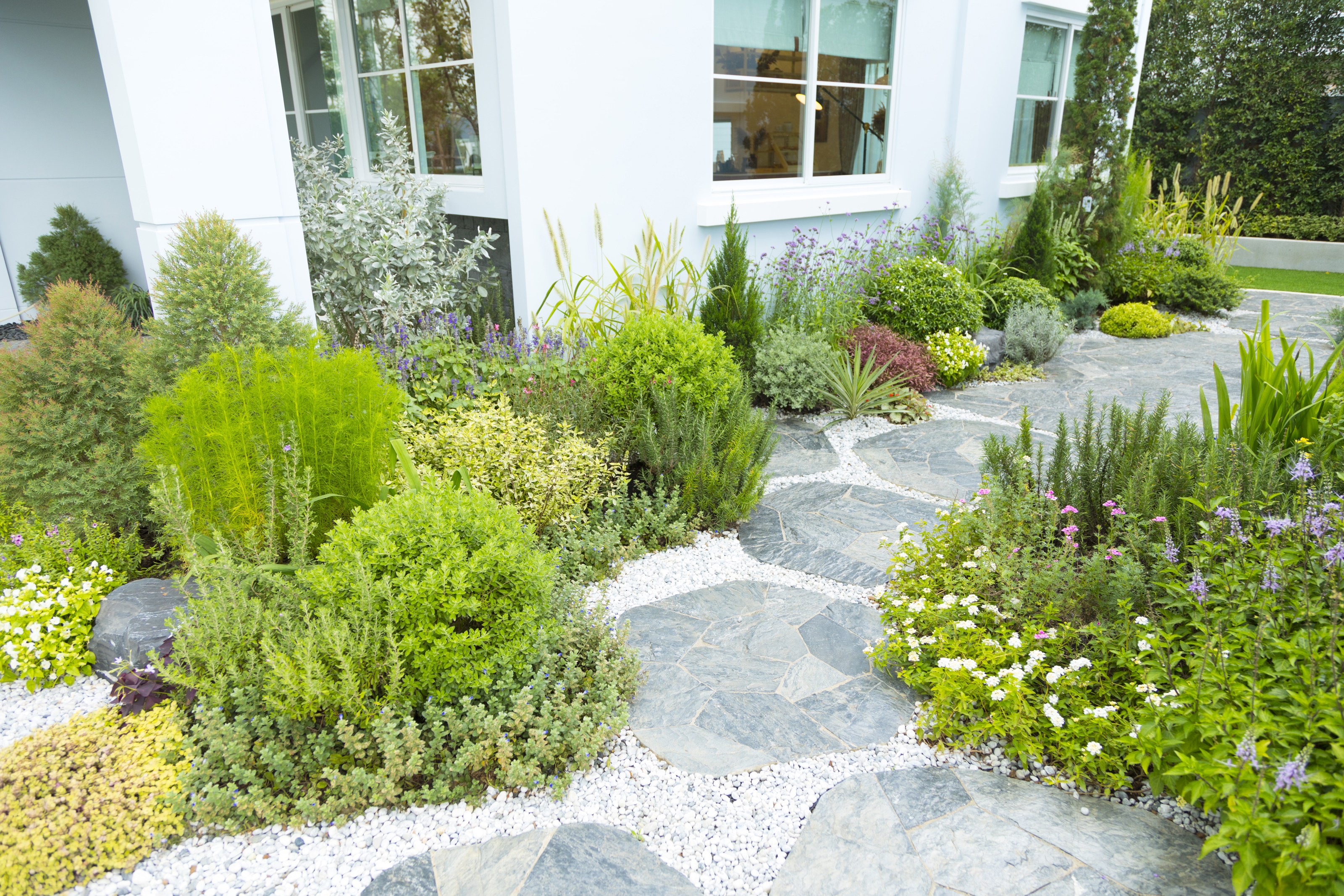How Artificial Grass Enhances Curb Appeal Without the Maintenance
Change Your Garden With Innovative Landscape Design Concepts and Strategies
Changing a garden needs thoughtful factor to consider of its special attributes. Reliable landscape Design can enhance both performance and visual allure. By discovering different techniques, one can develop an area that not only mirrors individual design however additionally sustains neighborhood biodiversity. As the journey unfolds, questions regarding plant option, format, and sustainability emerge, triggering a much deeper exploration into how to make these concepts revive.
Examining Your Outdoor Area: Understanding Your Garden's Possible
Evaluating outside room is essential for efficient landscape design. Comprehending the one-of-a-kind features of a yard enables developers to optimize its capacity. Factors such as dirt quality, sunshine direct exposure, and existing frameworks play a vital role in establishing what can be achieved. Examining the topography helps recognize locations for planting, paths, or water features, while noting water drainage patterns ensures that plants flourish without waterlogging.
Identifying the yard's microclimates can affect plant option and positioning. Observing just how the room is utilized by homeowners informs functional Design options, such as seating locations or play zones. In addition, considering the bordering atmosphere and neighboring landscapes can give inspiration and context for Design decisions. By extensively checking out these aspects, one can produce a natural and inviting outside room that mirrors the proprietor's vision while integrating with nature. Eventually, an extensive assessment prepares for a successful landscape Design task.
Picking the Right Plant Kingdoms: An Overview to Shade, Texture, and Seasonal Rate of interest
When picking plants for a landscape style, recognizing the interaction of color, structure, and seasonal passion is essential for creating a vibrant and vivid garden. Color can evoke feelings and established the tone for the room; as a result, picking an unified palette boosts aesthetic allure. Cozy tones like reds and oranges produce energy, while cooler hues like blues and environment-friendlies offer tranquility.
Texture adds depth and measurement, permitting a mix of vegetation sizes and shapes. Combining fine-textured plants with bold-leaved varieties produces contrast and intrigue.
Seasonal interest is essential for maintaining year-round charm. Selecting a selection of plants that grow in different seasons guarantees that the garden remains lively, shifting from spring's vivid flowers to fall's rich foliage. By thoughtfully considering these components, one can curate a landscape that is not only aesthetically pleasing but appealing and likewise diverse throughout the year.

Developing Useful Areas: Creating Spaces for Leisure and Home entertainment
Developing useful zones in a landscape Design enhances the usability of exterior rooms, permitting property owners to flawlessly blend relaxation and home entertainment. By attentively splitting areas into unique zones, people can cater to numerous activities, from peaceful resorts to lively events. A properly designed area could incorporate a comfortable reading space snuggled amongst rich greenery, offering a tranquil retreat (Landscape Architect). In contrast, a vibrant outdoor dining area can function as the best setup for events with friends and family
Strategically positioned paths can assist guests in between these areas, guaranteeing very easy navigating. In addition, including components like seating locations, fire pits, or water attributes can improve the general setting and performance. The assimilation of diverse structures and shades in each area can develop aesthetic passion while preserving a cohesive visual. Inevitably, making functional areas permits house owners to maximize their outdoor experience, changing their yards right into flexible spaces that fulfill diverse way of life demands.
Including Hardscape Components: Patios, Walkways, and Focal Things
Integrating hardscape components into landscape Design complements useful zones by giving framework and visual appeal. Patios act as essential outside home, enabling home owners to appreciate meals and gatherings in a defined location while boosting access. The selection of materials, such as all-natural stone or concrete, can considerably influence the general aesthetic, mixing perfectly with the surrounding setting.
Sidewalks help with activity through the yard, assisting visitors while adding depth and interest. These paths can be crafted from different materials, consisting of crushed rock, pavers, or brick, each contributing to the yard's character.
Focal factors, such as decorative stones, sculptures, or water attributes, attract the eye and create a sense of function within the landscape. Purposefully placed, these elements can change an ordinary garden into an intriguing room, welcoming exploration and interaction. Through thoughtful assimilation of hardscape, a landscape comes to be not just functional yet likewise aesthetically spectacular.
Enhancing Privacy and Protection: All-natural Obstacles and Structures
To boost privacy and safety and security in landscape style, the usage of natural obstacles such as dense bushes can properly secure a residential or commercial property from unwanted sights. Furthermore, installing privacy fences supplies a solid structure that adds to a sense of safety and security and privacy. With each other, these elements produce an even more intimate outside space while hindering prospective intrusions.
Growing Thick Hedges
While several property owners look for aesthetic appeal in their landscapes, growing dense hedges serves a double function of improving privacy and safety and security. These natural obstacles produce an a knockout post aesthetic guard, successfully obstructing the sight from prying eyes and hindering possible trespassers. Various varieties, such as boxwood, holly, or privet, can be chosen for their development patterns and vegetation thickness, making certain lavish protection throughout the year. In addition, well-maintained hedges can contribute to a serene environment, taking in sound and offering a habitat for wild animals. The tactical placement of these hedges can specify building limits and produce secluded exterior spaces, enabling house owners to enjoy their yards with a sense of safety. Ultimately, thick bushes are an efficient service for mixing appeal with performance.
Setting Up Personal Privacy Fences
Personal privacy fences act as another efficient technique for boosting privacy and protection in property landscapes. These frameworks not just mark property boundaries but additionally create a sense of seclusion, securing home owners from spying eyes. Various materials, such as timber, steel, and plastic, deal distinct aesthetic appeals and levels of longevity, allowing homeowners to pick based upon their Design preferences and maintenance requirements.

Sustainable Landscaping: Eco-Friendly Practices for a Greener Yard
Sustainable landscape design emphasizes the importance of indigenous plant choice and water conservation methods. By selecting plants that are well-adapted to the regional atmosphere, gardeners can decrease maintenance and resource usage. Carrying out efficient sprinkling approaches better improves the garden's eco-friendly advantages, promoting a healthier community.
Native Plant Choice
Indigenous plant selection plays an essential function in sustainable landscaping, promoting biodiversity and decreasing the need for chemical inputs. By choosing plants belonging to a specific region, gardeners can develop habitats that support local wildlife, such as pollinators, birds, and beneficial pests. These plants are adjusted to the neighborhood environment and soil problems, requiring less water and maintenance contrasted to non-native varieties. Additionally, indigenous plants can assist manage disintegration and enhance soil wellness, cultivating a balanced environment. Integrating indigenous species right into landscape makes not only enhances the visual charm of the yard but likewise adds to ecological strength. Inevitably, native plant option is a crucial method for those looking for to cultivate a sustainable and lively yard.
Water Preservation Techniques
Including native plants can considerably improve water preservation efforts in landscaping. These plants are well-adapted to neighborhood climates, requiring less water and maintenance than non-native ranges. Executing drip watering systems allows targeted watering, lessening evaporation and drainage. Rain collecting systems can likewise be installed, saving and accumulating rain for garden use. Mulching aids keep dirt dampness, reducing the frequency of watering. Organizing plants with similar water requires with each other produces effective watering areas, further conserving water. Additionally, using absorptive products for paths enables rain to seep into the ground, renewing groundwater materials. By utilizing these water preservation techniques, gardeners can produce lasting landscapes that flourish while minimizing environmental effect (Artificial Grass). Such methods add to a greener yard and a healthier ecological community
Individualizing Your Layout: Adding Distinct Features and Individual Touches
Just how can one transform a yard right into a personal shelter? Personalizing a landscape Design includes integrating one-of-a-kind functions that reflect private tastes and way of lives. Home Page One method is to include individualized garden art, such as sculptures or handmade birdhouses, which can work as focal factors and conversation starters. In addition, customizing plant selections based on seasonal flowers or personal choices can her explanation produce a lively and developing space.
Producing functional locations, such as a relaxing reading nook or an outside dining area, can boost functionality and convenience. Incorporating components like a fire pit or a water attribute can present a welcoming setting.
Color products, textures, and schemes should straighten with the house owner's style, whether it be contemporary, rustic, or eclectic. Inevitably, the objective is to develop a room that reverberates with the person's identity, making the garden not just a visual joy but a real expansion of the property owner's character.
Often Asked Questions
Exactly how Do I Allocate a Landscape Design Project?
To spending plan for a landscape Design job, one need to examine task scope, research study expenses for materials and labor, prioritize attributes, and assign an added 10-20% for unexpected expenses, guaranteeing a realistic financial strategy.
What Tools Are Necessary for Home Garden Landscape Design?
Necessary tools for home yard landscape design include a shovel, rake, garden fork, pruning shears, trowel, hoe, and wheelbarrow. These tools help in dirt preparation, growing, maintenance, and efficient transport of products throughout the landscape design job.
Just How Can I Preserve My Garden After Revamping?
To keep a redesigned garden, normal watering, mulching, weeding, and pruning are crucial (Landscaping Design San Diego). Surveillance plant health, adjusting soil nutrients, and seasonal plant treatment add to a thriving atmosphere that showcases the yard's brand-new Design effectively
When Is the Finest Time to Begin Landscape Design?

Can I DIY My Landscape Design or Should I Hire a Professional?
People can absolutely DIY their landscape Design if they possess imagination and basic skills; nonetheless, employing a specialist commonly ensures a much more natural and skilled outcome, specifically for intricate jobs or particular Design desires.
Identifying the garden's microclimates can influence plant option and placement. When picking plants for a landscape design, recognizing the interplay of shade, structure, and seasonal passion is essential for developing a dynamic and dynamic garden. Picking a range of plants that bloom in various periods guarantees that the yard stays vibrant, changing from springtime's dynamic blossoms to autumn's abundant vegetation. Including native species right into landscape designs not just improves the visual appeal of the yard yet also contributes to environmental strength. Necessary devices for home yard landscaping consist of a shovel, rake, yard fork, pruning shears, trowel, hoe, and wheelbarrow.